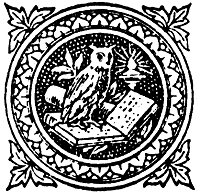ISSN 1750-4953
Marginalia
Home
About Marginalia
Current Issue
Archived Issues
Notes to Contributors
Links to Other Online Journals
Marginalia -- The Website of the MRG
Marginalia
Home
About Marginalia
Current Issue
Archived Issues
Notes to Contributors
Links to Other Online Journals
Marginalia -- The Website of the MRG
M.A. Claussen
The Reform of the Frankish Church: Chrodegang of Metz and the Regula canonicorum in the Eighth Century
362 pages. Cambridge University Press, 2005. �48.00 ($80.00)
ISBN: 0521839319
The Reform of the Frankish Church: Chrodegang of Metz and the Regula canonicorum in the Eighth Century
362 pages. Cambridge University Press, 2005. �48.00 ($80.00)
ISBN: 0521839319
This book represents the first major study of Chrodegang of Metz in English; it is also noteworthy in its focus on canons as a distinct form of Carolingian religious life. All too often canons, monks and secular priests are lumped together as clergy, but Claussen draws attention to what exactly distinguishes these three groups. Divided into three sections, the book first presents a biography of Chrodegang, then focuses on the Regula canonicorum (henceforth RC), concluding by placing the RC in the context of Chrodegang�s broader reform program.
This third section is a fascinating presentation of urban life in eighth-century Metz. Another particularly engaging section is Claussen�s commentary on the RC, which provides a valuable introduction to this influential source. Claussen�s analysis of the sources of the RC is divided between a textual analysis of the use of the Benedictine Rule and an intertexual analysis of the use of other sources in the RC. His analysis of Chrodegang�s use of the Benedictine Rule argues that Chrodegang is not imitating or mindlessly copying his source, but rather appropriates it and re-interprets it for his own purposes.
Yet when Claussen turns to other texts cited in the RC, he leans heavily upon intertextual theory and neglects to ground his analysis in historical evidence. Arguing that Chrodegang�s citation of other sources was intended to direct his canons to read the original works in full, Claussen turns to sermons from Gregory and Caesarius of Arles and the corpus of Julianus Pomerius, re-interpreting them through the interests of the RC. This is a plausible hypothesis, but in this situation it is not unusual to find codicological evidence to support the textual citations. Claussen provides only a cursory discussion of the extant manuscripts of the RC, which do not appear to contain material from the authors cited in the RC. Nor does he mention any marginalia or annotations, which would be sure signs of how Chrodegang�s canons or other medieval readers responded to these passages.
A more pervasive weakness of the book is an over-simplified portrayal of monasticism, which appears to derive from an over-emphasis on the rhetoric of monastic legislation. He presents early medieval monks as �essentially contemplative� (p. 112) in contrast to the active life of canons, whose two-fold purpose was liturgical prayer and �pastoral, non-liturgical activities� (p. 226). Yet a more complex picture of monasticism emerges from other types of eighth-century sources. Consider the prominence of monastic communities in the confraternity movement that Chrodegang helped found, where the evidence suggests that the laity favoured monks over canons for the deeply pastoral activity of intercessory prayer. Numerous examples of monks engaged in even more active pastoral activity abound in early medieval chronicles and hagiography. While Claussen touches on this evidence in passing, he does not engage with its implications for his typology of religious life and his conclusions are less convincing for it.
This third section is a fascinating presentation of urban life in eighth-century Metz. Another particularly engaging section is Claussen�s commentary on the RC, which provides a valuable introduction to this influential source. Claussen�s analysis of the sources of the RC is divided between a textual analysis of the use of the Benedictine Rule and an intertexual analysis of the use of other sources in the RC. His analysis of Chrodegang�s use of the Benedictine Rule argues that Chrodegang is not imitating or mindlessly copying his source, but rather appropriates it and re-interprets it for his own purposes.
Yet when Claussen turns to other texts cited in the RC, he leans heavily upon intertextual theory and neglects to ground his analysis in historical evidence. Arguing that Chrodegang�s citation of other sources was intended to direct his canons to read the original works in full, Claussen turns to sermons from Gregory and Caesarius of Arles and the corpus of Julianus Pomerius, re-interpreting them through the interests of the RC. This is a plausible hypothesis, but in this situation it is not unusual to find codicological evidence to support the textual citations. Claussen provides only a cursory discussion of the extant manuscripts of the RC, which do not appear to contain material from the authors cited in the RC. Nor does he mention any marginalia or annotations, which would be sure signs of how Chrodegang�s canons or other medieval readers responded to these passages.
A more pervasive weakness of the book is an over-simplified portrayal of monasticism, which appears to derive from an over-emphasis on the rhetoric of monastic legislation. He presents early medieval monks as �essentially contemplative� (p. 112) in contrast to the active life of canons, whose two-fold purpose was liturgical prayer and �pastoral, non-liturgical activities� (p. 226). Yet a more complex picture of monasticism emerges from other types of eighth-century sources. Consider the prominence of monastic communities in the confraternity movement that Chrodegang helped found, where the evidence suggests that the laity favoured monks over canons for the deeply pastoral activity of intercessory prayer. Numerous examples of monks engaged in even more active pastoral activity abound in early medieval chronicles and hagiography. While Claussen touches on this evidence in passing, he does not engage with its implications for his typology of religious life and his conclusions are less convincing for it.
Julian Hendrix, U. of Cambridge
 Previous |
 Next |

